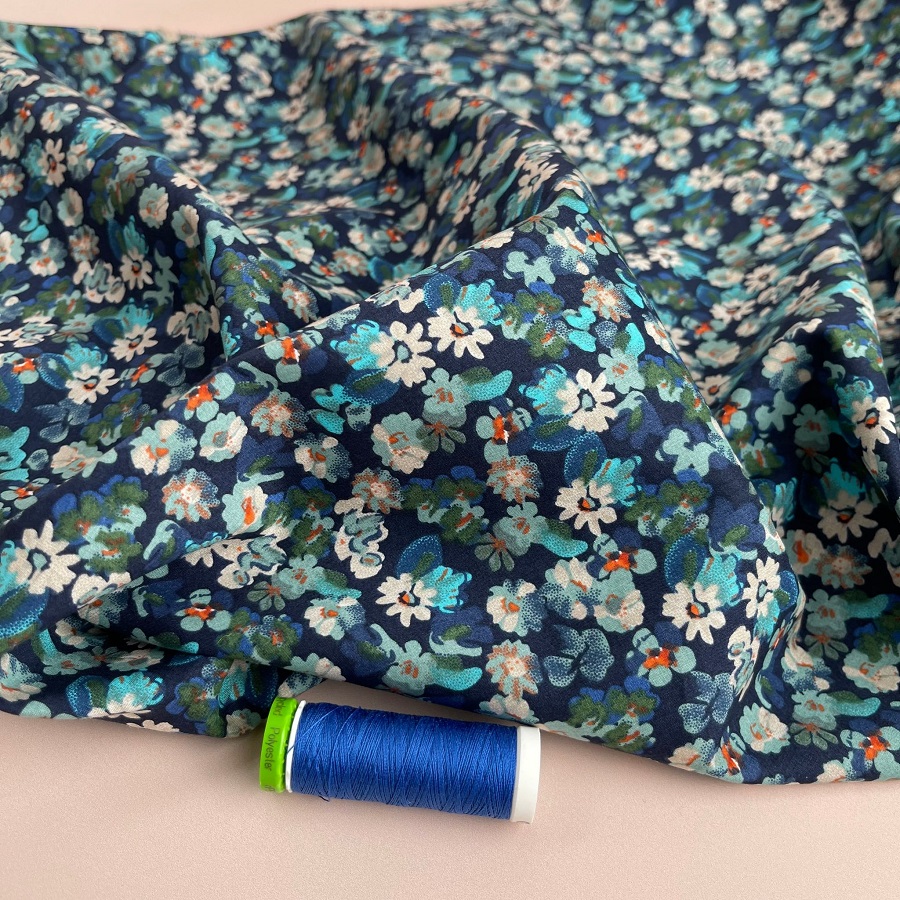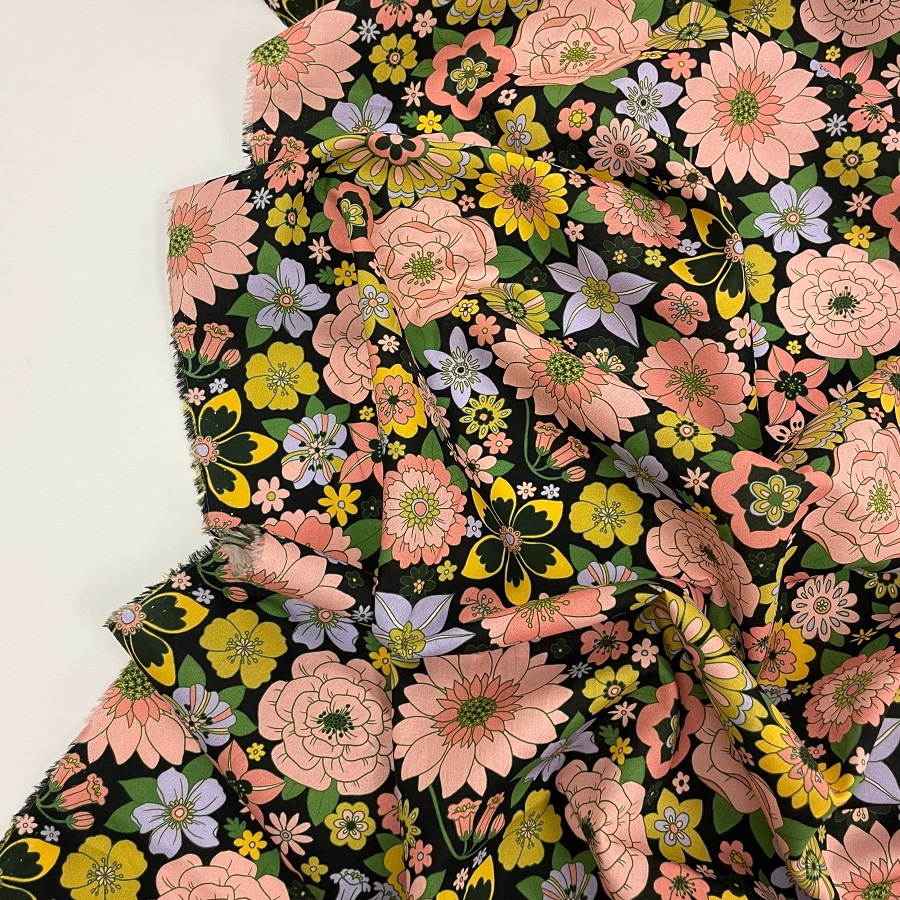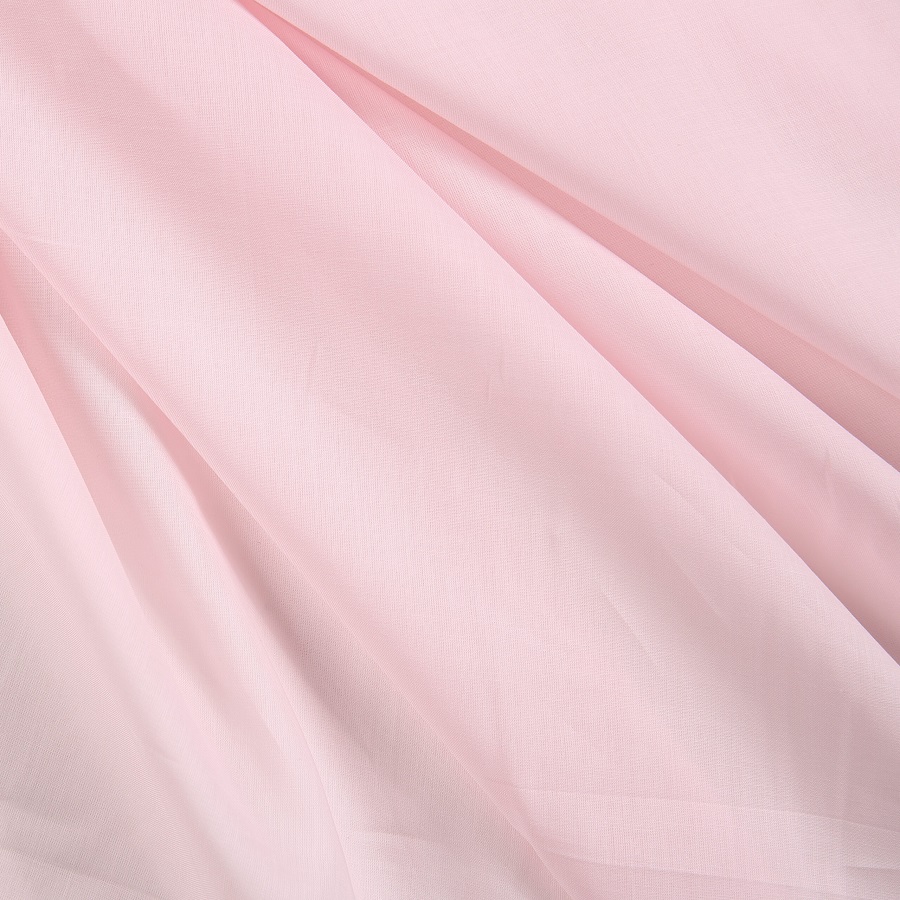What Is Cotton Lawn Fabric
Cotton lawn fabric is a lightweight, breathable textile. It’s made from high-thread-count cotton yarns, which creates a silky smooth texture. This fabric is known for its semi-transparent quality and fine drape, making it versatile for various clothing items. You’ll find cotton lawn often used for summer dresses, blouses, and linens, where comfort and coolness are priorities.
Due to its tight weave, cotton lawn fabric has a slight crispness but remains soft to the touch. It bears a resemblance to voile and batiste but differs in its distinct lightness and a slightly more polished surface. The fine nature of cotton lawn makes it delightful against the skin, often appealing to those who desire elegance along with ease. In short, it is the go-to fabric for creating delicate, breathable garments fit for warm weather.
Characteristics of Cotton Lawn Fabric
Cotton lawn fabric stands out for several unique properties. Its high-thread count endows it with a luxurious feel and fine, silky texture. The fabric’s light weight contributes to its exceptional breathability, making it a prime choice for warm climates and summer wear.
Durability is another feature, despite its delicate appearance. The tight weave not only grants a subtle sheen but also ensures longevity of the garments made with it. This characteristic allows for frequent wear and washing without compromising the fabric’s quality.
Furthermore, cotton lawn holds dyes well, resulting in vivid, lasting colors that enhance the appeal of any wardrobe. This quality lends itself to a wide variety of vibrant patterns and shades, giving designers creative freedom.
Lastly, cotton lawn fabric has moderate wrinkle resistance. Its smooth surface is less prone to creasing compared to other light textiles, aiding in the maintenance of a polished look throughout the day. Together, these characteristics make cotton lawn an optimal choice for a combination of comfort, elegance, and practicality.

The History of Cotton Lawn Fabric
Cotton lawn fabric has roots in the early 20th century. It evolved as an alternative to heavier textiles. The name ‘lawn’ comes from Laon, a city in France where it was first woven. Its creation was a response to a growing demand for lighter, more breathable fabrics.
Initially, it was a luxury item, accessible to the well-off. Over time, advances in textile manufacturing made cotton lawn more widely available. By the mid-1900s, it was a popular choice for a variety of summer garments.
Its journey mirrors the changes in society and fashion. Cotton lawn began as a symbol of status, but it has become a staple in closets worldwide. This evolution speaks to the fabric’s versatility and enduring appeal. Its place in history is both rich and dynamic, reflecting the changing tastes and needs of fashion.
How Cotton Lawn Fabric Is Made
Understanding the production process of cotton lawn fabric allows us to appreciate its delicate quality. The process begins with the selection of high-grade cotton fibers. These fibers are finer and longer than those used in regular cotton fabrics, contributing to the lawn’s smooth texture. First, the cotton is cleaned to remove any impurities. It undergoes a process known as carding, which disentangles, cleans, and intermixes the fibers to produce a continuous web suitable for spinning.
Next comes the spinning phase, where the cotton fibers are twisted into yarns. For cotton lawn, the yarns are tightly spun, creating the fine, high-thread-count yarns that are the hallmark of this fabric. After spinning, these yarns are woven on a loom. The weave pattern is typically a plain weave, meaning each weft thread alternates over and under each warp thread, giving the fabric its consistent, closed surface and enhancing its smooth feel.
Once woven, cotton lawn fabric is treated to achieve its characteristic crisp yet soft texture. This involves processes such as bleaching, dyeing, and finishing. Dyeing is a crucial process, as cotton lawn holds dyes well, leading to the vibrant colors that make it stand out. Finishing processes, such as mercerizing, can be applied to give the fabric a subtle luster and to further improve its strength.
Every stage of the manufacturing process is carried out with care and precision. This ensures that the final product retains the qualities cotton lawn fabric is respected for: lightness, breathability, and a silky touch. While the manufacturing has become more sophisticated over time, the essence of crafting cotton lawn remains tied to creating a fabric that’s both luxurious and wearable in the heat of summer.

Common Uses of Cotton Lawn Fabric
Cotton lawn fabric, with its lightweight and breathable nature, is an excellent choice for a variety of applications. Due to its smooth, silky texture, it has become a favorite for designers and sewing enthusiasts alike. Here are some of the most common uses for cotton lawn fabric:
Summer Dresses and Blouses: Its breathability makes it perfect for flowy summer dresses and comfortable blouses. The fabric keeps the wearer cool in hot temperatures.
Children’s Clothing: Cotton lawn is gentle on the skin, which makes it ideal for children’s clothing. Its soft texture is suited for delicate skin.
Lingerie and Sleepwear: The fabric’s fine weave and softness provide a luxurious feeling that’s well-suited for lingerie and nightwear. It ensures comfort throughout the night.
Lightweight Shirts: For both men and women, cotton lawn is used in creating lightweight shirts that offer a polished look without the bulk.
Quilting: Cotton lawn can be used in quilting projects where a finer texture is desired. It adds elegance to quilt designs.
Handkerchiefs and Scarves: Its softness and easy drape make cotton lawn an excellent choice for accessories like handkerchiefs and scarves.
Home Décor: Its crisp appearance lends itself to home décor items such as curtains and pillowcases, adding a touch of sophistication.
Each use takes advantage of the fabric’s unique properties, like its ability to display vibrant colors and maintain a chic appearance, all while providing unmatched comfort. Cotton lawn fabric continues to be a versatile material in both fashion and home décor.
Tips for Sewing with Cotton Lawn Fabric
Cotton lawn fabric’s fine texture poses some unique sewing challenges. Here’s how to handle them effectively:
Use the Right Needle: Opt for a fine, sharp needle, like a size 60/8 or 70/10. This helps prevent snagging the delicate threads.
Select Suitable Thread: Choose a high-quality cotton or polyester thread that’s not too heavy. It should match the fabric’s lightweight nature.
Adjust Tension: Set your sewing machine’s tension lighter than usual. This stops puckering and maintains the fabric’s smooth surface.
Stabilize the Fabric: Use a light stabilizer or interfacing to provide structure. It makes cutting and sewing cotton lawn more manageable.
Employ French Seams: French seams enclose raw edges and offer a clean finish, ideal for the sheer nature of cotton lawn.
Reduce the Stitch Length: A shorter stitch length ensures stronger seams. Try a setting between 1.5 to 2 mm.
Iron Gently: Press with a warm, not hot, iron. Use a pressing cloth to shield the fabric from direct heat.
Practice Patience: Sew slowly for precision. Cotton lawn can shift, so take your time to keep seams straight.
With these tips, sewing with cotton lawn fabric can be enjoyable and yield beautiful results. You’ll tackle its challenges confidently, creating elegant, breathable garments with ease.

Caring for Cotton Lawn Garments
To keep your cotton lawn garments looking their best, proper care is essential. The lightweight and delicate nature of cotton lawn fabric requires some special attention when washing, drying, and storing. Here are practical tips to care for your cotton lawn clothing and ensure it remains in pristine condition.
Wash Gently: Cotton lawn should be washed using a gentle cycle or by hand with a mild detergent. Hot water can cause shrinkage, so stick to cold or lukewarm water for best results.
Avoid Bleach: Bleaching agents can be too harsh on cotton lawn fabric, stripping away colors and weakening fibers. Opt for non-chlorine bleach if necessary.
Dry with Care: High heat can damage the fabric, so air drying is ideal. If you must use a dryer, set it on a low heat or air-fluff setting. Remove the garments while they are still slightly damp to reduce wrinkling.
Iron on Low Heat: When ironing, use a low heat setting and always iron on the reverse side of the fabric to protect its sheen. A pressing cloth can offer additional protection against direct heat.
Store Properly: Store cotton lawn garments by hanging them or laying them flat. Avoid folding to minimize creases, and keep them away from direct sunlight, which can fade colors over time.
By following these care tips, your cotton lawn garments will maintain their shape, color, and delicate texture for many seasons to come. Proper care not only preserves the beauty of the fabric but also extends the longevity of your clothes.
Comparing Cotton Lawn to Other Lightweight Fabrics
When considering lightweight fabrics, cotton lawn often gets compared to other textiles like voile, batiste, and silk chiffon. Understanding these differences can help you choose the right fabric for your project.
Voile is similar to cotton lawn but has a slightly looser weave. This makes it a bit more sheer and lighter in weight. Voile drapes beautifully and is great for soft, airy curtains and delicate clothing.
Batiste is another comparable fabric that is also made from cotton. It’s finer and lighter than cotton lawn, with a semi-sheer appearance. Batiste is perfect for undergarments and infant wear.
Silk Chiffon is a sheer fabric with a shimmery appearance. It is very light and offers exceptional drape, ideal for elegant scarves, blouses, and eveningwear. Unlike cotton lawn, chiffon can be a bit slippery and harder to sew.
Each of these fabrics has its unique qualities that make it suitable for various purposes. Cotton lawn stands out because of its crispness, soft texture, and versatility, making it a go-to choice for comfortable yet elegant garments.
